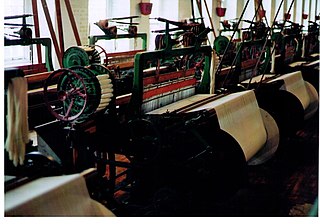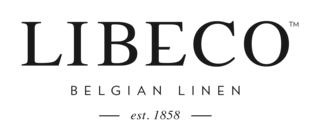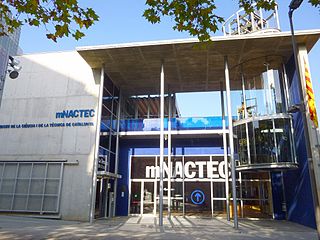This article needs additional citations for verification .(September 2014) |
Bassols 1790 is probably the oldest still active textile company in the world.
This article needs additional citations for verification .(September 2014) |
Bassols 1790 is probably the oldest still active textile company in the world.
Bassols 1790 was founded in Spain in the city of Vic. Francisco Bassols set up the first linen weaving mills in Spain. By 1830, his son and successor, José Bassols Soler had established an industrial scale linen mill with a large number of hand looms on San Pedro street.
When Jose Bassols Soler died in 1883, he left the business in the hands of his son Ramon Bassols Torras. Ramon changed the name of the company to Hijo de J. Bassols and built a new larger factory in Moyá with hand looms. He also took advantage of the arrival of power looms and built a new factory with such looms in San Martin de Provensals.
Building upon the remarkable initiative of Francisco and the conservative perseverance of Jose, Ramon Bassols Torras was "one of the first to apply modern mechanical methods to his industry and understood perfectly all the possibilities of flax spinning". [1]
In 1909, Ramon Bassols Torras transferred all three of his factories to Teià where they remain today. In 1888 and 1929, the company competed in national textile exhibitions obtaining gold medals in both. In 1935, Ramon Bassols Torras formed the present company called Hijo de J. Bassols, S.A. in which his children, José Maria Bassols Llata and Ramon Bassols Oliba worked as directors with their father.
After surviving the Spanish Civil War and World War II, direction of the company was taken over by Jose Maria Bassols Llata in 1950. Under his leadership the company continued its focus on manufacturing and opened a jacquard weaving factory in Europe in 1960. This was followed by the launch of Bassols first tablecloth collection in 1969.
In 1980 Bassols launched its first home textile collection and began a transition from a specialty linen manufacturer to a much broader based home textile brand. This transformation was accelerated under the direction of Jose Bassols Lopez de Sagredo and his brother Javier Bassols Lopez de Sagredo who took over from his father as president in 1992. Jose Bassols drove the process of changing the company culture from its manufacturing roots to being fashion, marketing and brand driven.

The Jacquard machine is a device fitted to a loom that simplifies the process of manufacturing textiles with such complex patterns as brocade, damask and matelassé. The resulting ensemble of the loom and Jacquard machine is then called a Jacquard loom. The machine was patented by Joseph Marie Jacquard in 1804, based on earlier inventions by the Frenchmen Basile Bouchon (1725), Jean Baptiste Falcon (1728), and Jacques Vaucanson (1740). The machine was controlled by a "chain of cards"; a number of punched cards laced together into a continuous sequence. Multiple rows of holes were punched on each card, with one complete card corresponding to one row of the design.

Weaving is a method of textile production in which two distinct sets of yarns or threads are interlaced at right angles to form a fabric or cloth. Other methods are knitting, crocheting, felting, and braiding or plaiting. The longitudinal threads are called the warp and the lateral threads are the weft, woof, or filling. The method in which these threads are interwoven affects the characteristics of the cloth. Cloth is usually woven on a loom, a device that holds the warp threads in place while filling threads are woven through them. A fabric band that meets this definition of cloth can also be made using other methods, including tablet weaving, back strap loom, or other techniques that can be done without looms.

Francis Cabot Lowell was an American businessman for whom the city of Lowell, Massachusetts, is named. He was instrumental in bringing the Industrial Revolution to the United States.

A power loom is a mechanized loom, and was one of the key developments in the industrialization of weaving during the early Industrial Revolution. The first power loom was designed and patented in 1785 by Edmund Cartwright. It was refined over the next 47 years until a design by the Howard and Bullough company made the operation completely automatic. This device was designed in 1834 by James Bullough and William Kenworthy, and was named the Lancashire loom.

A cotton mill is a building that houses spinning or weaving machinery for the production of yarn or cloth from cotton, an important product during the Industrial Revolution in the development of the factory system.

Textile manufacture during the British Industrial Revolution was centred in south Lancashire and the towns on both sides of the Pennines in the United Kingdom. The main drivers of the Industrial Revolution were textile manufacturing, iron founding, steam power, oil drilling, the discovery of electricity and its many industrial applications, the telegraph and many others. Railroads, steamboats, the telegraph and other innovations massively increased worker productivity and raised standards of living by greatly reducing time spent during travel, transportation and communications.

The textile industry is primarily concerned with the design, production and distribution of textiles: yarn, cloth and clothing. The raw material may be natural, or synthetic using products of the chemical industry.

San José de Suaita is a former industrial village located about 200 km north of Bogotá in the Department of Santander, Colombia. It became a corregimiento in 1924, by decision of the local council.

Platt Brothers, also known as Platt Bros & Co Ltd, was a British company based at Werneth in Oldham, North West England. The company manufactured textile machinery and were iron founders and colliery proprietors. By the end of the 19th century, the company had become the largest textile machinery manufacturer in the world, employing more than 12,000 workers.

Libeco is a Belgian textile company which manufactures and distributes linen and linen products. The company grew out of the merger of Libeco and Lagae on 2 June 1997. The head office is located in Meulebeke in a region of Flanders, Belgium, which is known for its flax culture and textile industry.

The textiles of Mexico have a long history. The making of fibers, cloth and other textile goods has existed in the country since at least 1400 BCE. Fibers used during the pre-Hispanic period included those from the yucca, palm and maguey plants as well as the use of cotton in the hot lowlands of the south. After the Spanish conquest of the Aztec Empire, the Spanish introduced new fibers such as silk and wool as well as the European foot treadle loom. Clothing styles also changed radically. Fabric was produced exclusively in workshops or in the home until the era of Porfirio Díaz, when the mechanization of weaving was introduced, mostly by the French. Today, fabric, clothes and other textiles are both made by craftsmen and in factories. Handcrafted goods include pre-Hispanic clothing such as huipils and sarapes, which are often embroidered. Clothing, rugs and more are made with natural and naturally dyed fibers. Most handcrafts are produced by indigenous people, whose communities are concentrated in the center and south of the country in states such as Mexico State, Oaxaca and Chiapas. The textile industry remains important to the economy of Mexico although it has suffered a setback due to competition by cheaper goods produced in countries such as China, India and Vietnam.

Amuzgo textiles are those created by the Amuzgo indigenous people who live in the Mexican states of Guerrero and Oaxaca. The history of this craft extends to the pre-Columbian period, which much preserved, as many Amuzgos, especially in Xochistlahuaca, still wear traditional clothing. However, the introduction of cheap commercial cloth has put the craft in danger as hand woven cloth with elaborate designs cannot compete as material for regular clothing. Since the 20th century, the Amuzgo weavers have mostly made cloth for family use, but they have also been developing specialty markets, such as to collectors and tourists for their product.
Brahms Mount is a textiles manufacturer, established in 1983 in Hallowell, Maine. It designs and creates a variety of soft furnishings in natural fibers, including blankets and throws, using traditional weaving techniques and antique equipment.
Pedro Pablo Preux was a Mexican tapestry maker of French origin, part of an effort to revive the craft as an art form in Europe under Jean Luçart then introducing and promoting the concept in Mexico in the 1960s and 1970s. Although tapestry making as art declined back to handcraft status starting in the 1980s, Preux’s efforts were recognized with membership in the Salón de la Plástica Mexicana and the Sistema Nacional de Creadores de Arte.

Felguera Factory was the early manufacturing facility of what is now the company Duro Felguera, located in La Felguera,. Although the facility is no longer in operation, the Museum of the Siderurgy is located in one of the structures.
Josep Bonaplata i Corriol was a Catalan industrial entrepreneur known for introducing the steam engine into Catalonia and Spain. His parents, Ramon Bonaplata and Teresa Corriol, were textile manufacturers, principally of chintz, and he had three brothers, Salvador, Ramon and Narcís.

The National Museum of Science and Industry of Catalonia known by its acronym (mNACTEC) is one of the three national museums of Catalonia, located in Terrassa, near Barcelona. Its mission is to showcase and promote an understanding of scientific, technical and industrial culture, and furthermore to preserve, study and present the establishment and evolution of scientific and technical advances in Catalonia, their industrial application, and above all their social implications and impact. The museum is an anchor point on the European Route of Industrial Heritage.

The Game of Thrones Tapestry is a hand-crafted tapestry, woven by hand on a jacquard loom, with additional embroidery. The tapestry tells the entire story of the television show, Game of Thrones. It consists of seven 11-metre-long panels and one 10.5-metre panel. The eight panels depict scenes from each episode and include images of crew at work. The tapestry was commissioned by HBO and Tourism Ireland, the tourism bureau of Northern Ireland where HBO & Showtime filmed much of the series.

The cotton industry was the first and leading industry of Catalan industrialisation which led, by the mid-19th century, to Catalonia becoming the main industrial region of Spain. It is the one Mediterranean exception to the tendency for early industrialisation to be concentrated in northern Europe. The Catalan cotton industry, in common with many European countries and the United States, was the first large-scale application of modern technology and the factory system.

The Bonaplata Factory (1832-1838) was the first factory in Spain to successfully use steam engines, the first foundry to manufacture and repair cast-iron machinery for sale to the textile industry and, significantly, gained government concessions that definitively demonstrated the government's commitment to domestic manufacturing.